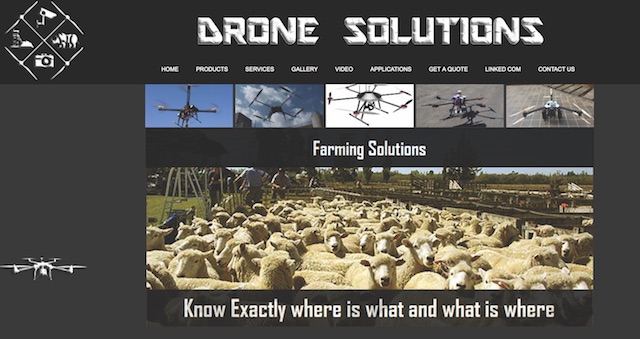HOW VIDEO STREAMS ARE HELPING FARMERS AND AGRICULTURE BUSINESSES
12th Mar 2018 It may come as a surprise to learn that video streams are playing a part in the business of farming and agriculture, and not just of pretty countryside views either.
It may come as a surprise to learn that video streams are playing a part in the business of farming and agriculture, and not just of pretty countryside views either.
Drone technology is an area that is becoming increasingly popular within the farming industry, particularly for cattle, livestock and farmyard animal management. Here we will examine ways that video streams can be used in the farming industry.
Using drones to aid livestock herding and cattle drives
For larger agribusinesses, drones can be a useful tool to aid livestock herding, and to augment the role of a herder or shepherd. Traditionally, human herders count the livestock once herding is completed and the animals have reached the pen, often while they move through a narrowed gated or fenced area which separates the animals into single file. This method is not always reliable, and several herders may have different results in the final count, leading to a recount, or more, until everyone’s tally agrees – a time-consuming process that farmers estimate can take between half an hour and up to 3 hours.
Using the latest drone technology and object recognition software, farmers are now able to position the drone above the gate and accurately count the animals that pass through in single file. The high-quality footage can also be used as a post-herding tool, or can be viewed remotely by another operator elsewhere within the business.
Drones can also be used to survey pasture land before animals are herded, to identify potential obstacles or determine a herding route if the land is not familiar. There are industry experts who look forward to combining drone technology with 3D mapping to determine routes across vast expanses, which would be advantageous for use in cattle drives for both herders and cattle.
Streaming tutorials, safety information and fact-checking
The advent of mobile technology has changed the face of how we find information on-the-go. With increasing technology and connectivity, smartphones and tablets are now forming the backbone of daily life and making information more accessible than ever before.
For farmers and agribusinesses, who often work remotely and away from fixed communications, this is ideal for situations where a little information or a fact check can be invaluable. There are millions of tutorials online that can help with anything from a loose belt on a tractor to a problem with an electric fence and just about everything in between. Even the most experienced farmer can encounter an issue he has never seen before, and access to the internet can save significant amounts of time when necessary.
In the US, California’s State Compensation Insurance Fund has produced a set of free safety videos for the farming community. These include video streams such as:
- ATV Safety
- Pesticide best practices
- Harvester use safety
- How to handle a tractor on the highway
- And more.
All videos are free and are available for live streaming to any device.
Using drone technology for farm maintenance tasks
Farms and ranches can be vast, and must be checked regularly to ensure that fences are secure and undamaged, and that cattle or livestock are where they should be. For the largest farms and ranches, this can be a time-consuming task that often involves physical checking, whether on foot or in a farm vehicle.
Drone technology is changing that, and farmers are now able to utilise farm resources in other ways, leading to time and cost savings. A drone operator need not spend time and fuel travelling the fence perimeters, but simply fly the drone wherever it needs to be to identify potential hazards or wayward cattle or livestock.
Again, with the addition of computer-vision, or artificial intelligence, breaks in a fence, for example, can be picked up instantly, allowing the farmer or rancher to attend the problem quickly.
Video streams at cattle auctions and fairs
This type of remote attendance at cattle auctions and state fairs is fast-increasing in popularity. Cattle auctions are one of the most well-attended events in farming calendars, and are where farmers bid against one another to buy cattle.
Toronto’s Royal Agricultural Winter Fair is the largest in the world yet is still pretty much locally attended. In 2016, the event organiser decided to produce a live video stream and expected attendance to be fair at around 200 people. The 9-day event coverage attracted more than 25,000 viewers and drove people to the actual event field.
Farming innovation and research development
Although the farming industry is very much a ‘hands-on’ industry, there is innovation happening all the time, and agricultural research is high on the agenda.
Some of the US’ most well-know research centres are beginning to produce video streams to highlight their agricultural research programs, and farmers are finding it fascinating.
With the latest research information available within video streams, farmers now have access to a wealth of information, including:
- Soil studies
- Plant and root pathology
- Disease studies
- Impact of microbiology on root systems
- And much more.
With the increase in video streams and advancements in technology to make video streams ever-more accessible in remote or vast areas, the farming and agricultural communities around the world really can benefit, regardless of size.



